The spice junkie
Garam masala means hot aromatic mixture of spices.
It’s not uncommon for each household in India to boast the best blend of spices for garam masala. Truth is, there isn’t a set of spices for garam masala. It’s what you like it to taste like.
Having said that, I have to admit, being Malaysian, I’m picky with the taste, texture and especially, the colour of my food; it has to be vibrant with garnishes.
Taste, colour and presentation are very important to me. Malaysian food must look good enough to eat. We are taught food decorating from an early age; men and women alike holding bragging rights to the best cooked dishes. We spend hours decorating and presenting the cuisine in a very sensual manner. Sight first, smell second, taste third and lastly, the lingering memory of a well presented dish. Malaysian food is indeed complex, it’s very diverse and intricate, and, yet simple enough to cook.
As such, I choose and blend spices that give my dishes a golden or light brown colour.
Ever so intrigued by herbs and spices, my cooking style keeps my dinner guests palates exhilarated.
“Wake up your taste buds and get them partying”, I say.
I was born and raised in Malaysia, immersed in a culture and cuisine that is a hybrid of cultures and cuisines that crossed oceans and broke barriers to form a unique blend of world famous delicacies. I do have six generations of colourful Malaysian generations before me, backing my culinary skills.
I learned European spices and cuisine when I married an European and travelled Europe. There were dill seeds, dill weeds, caraway, juniper berries, lavender and lovage.
I brought this knowledge back with me and started incorporating the new found flavours into my cooking.
Just, when I thought I knew Indian cooking and spices in Malaysia, I was introduced to more spices, herbs and condiments in Canada. I discovered Carribbean, Tunisian, Morrocan, French Canadian, Mexican and Middle Eastern spices and herbs.
I acquired the nickname; spice junky, not because I couldn’t get enough of spices but because of my knowledge and usage of them.
My collection of spices and herbs began to grow, I planted all the perennial herbs in my garden. I dried them and started to source new spices. I have to admit I perfected my Indian cooking style, learning from my Indian friends in Canada. I ate my first samosa right here.
What would I know about Indian cuisine growing up eating curry puffs in Malaysia? The Malaysian Indian food is Malaysian, as the name suggests, not the purist form of Indian cooking with mostly homemade spices and masalas.
Incidentally, my passion for cooking and curiosity for spices increased. I learned to cook Indian food.
I discovered true Indian cuisine. Pretty soon, I was teaching and amazing my Indian friends with Indian cooking.
Here is what you need to know about spices and garam masala.
Get to know the spices, the taste, the smell, the shape and how they compliment your dishes. Mix them and have fun cooking with different spices. That’s the only way you’ll learn. Read this small piece below. The length of this Goldilocks write up on garam masala is worth your read. The spices are identified in English with a few names in other languages.
- At a glance, it explains the differences between commonly confused spices.
- Sourcing your spices. Carefully buying the correct spice. Do not compromise by buying inferior qualities.
- The many flavours of spices.
- How to make your own garam masala.
- How to make curry powder from garam masala.
- The ingredients to my perfect garam masala.
- How to cook chicken curry. I’ve chosen the most requested curry dish, as an example.
First and foremost, let’s clear some spices that cause confusion out of the way.
Know your spices.
You and I may not be confused, however, there are some of you out there who can’t tell the difference between cumin seed and sesame seed. You know who you are!
Not to worry. I’ve got you covered. There are pictures of each and every spice used for the garam masala on this post.
Bear in mind that Caraway – Carum carvi, Anise – Pimpinella anisum, Coriander- Coriandrum sativum, Dill Anethum graveolens , Fennel – Foeniculum vulgare, Black cumin – bunium bulbocastanum and, Cumin- Cuminum cyminum are all plants belonging to the same Apiaceae family.
As a horticulturist and plant enthusiast, I can’t stress how important it is to identify each spice or herb from its scientific name.
(For instance, look up black cumin on the Internet and Nigella Sativa pops up everywhere and that is utterly, wrong. Upon closer research you’ll soon realize Nigella belongs to ranunculaceae family, not apiaceae.
How on earth did nigella become black cumin or onion seed for that matter, when Nigella has nothing to do with onion nor onion seeds?
Before Cassia there were Beautiful Cinnamon Quills
Eighty to ninety percent of TRUE cinnamon as you see below; cinnamomum verum is cultivated and exported from one country – Sri Lanka.
Make the change today and start using true cinnamon as opposed to cassia barks. Use cinnamon when making garam masala. You’ll see a difference in the taste, instantly. I grew up watching my mother, father, aunts and grandmothers using cinnamon quills. Cassia had no place in their treasured spice boxes.
True cinnamon quills are thin, lighter in colour, tightly wound and can be broken easily with your bare fingers. The quills encapsulate a sweet, mild, and sudden burst of intense woody heat.
Cinnamon Quills
The rest comes from China and Indo China in the name of cassia sticks. They are close enough but I consider them inferior cinnamon. They should be bundled up and wrapped around candles for decoration purposes – cinnamomum cassia. I wouldn’t use them myself, but wouldn’t stop anyone else from using it, either.
Cassia barks can be hard and rough, causing damage to the blades of the coffee grinder during grinding process. I have a separate coffee grinder for spice grinding.
Cassia Bark
Cinnamon (left) and Cassia (right) Comparison
Be in the know and be aware of cassia sold as cinnamon.
Cardamon
Both green and black cardamoms belong to the family Zingiberaceae.
Green and White cardamoms are the same pods. The older the cardamom gets the whiter it becomes, sometimes they are bleached.
Scientific name: Elettaria cardamomum
Green cardamoms are used for both sweet and savory dishes.
Considered the queen of spice, I throw a pinch here and a pinch there, to spruce up the flavour of desserts.
Green Cardamom
Black Cardamom
Notice the size of the green cardamom on the left.
Black or brown cardamom; bigger in size are used solely in savory dishes.
Scientific name: amomum subulatum
Fennel and Anise
Fennel seeds and Anise seeds (aniseed) are two different seeds. Fennel is bigger than anise and tastes different.
Fennel
Fennel
Scientific name: Foeniculum vulgare
Taste: Anise flavoured, sweet, green to light brown in colour.
The breath freshener spice coated with sugar served at Indian restaurants is fennel.
The word for caraway, cumin and fennel in any Indian language is going to sound the same – – jeera.
There is a big chance you’ll be walking out with jeera if you walked into an Indian store looking for caraway. You’ve got your jeera, but do you know which spice you just bought. I’ve been there. Lucky for me I know my spices.
This is why you have to know your spices.
Anise or aniseed (anise seed)
Anise
Scientific name: Pimpinella anisum
Anise seed is not star anise, nor is it fennel seed. Anise has a sweet licorice note similar to fennel and that’s where the similarity ends.
Anise seeds are bigger than carom seeds (ajwain), but half the size of fennel seed.
Cumin
Cumin
Scientific name: Cuminum cyminum
Cumin seeds are slightly curved and ridged.The size is smaller than caraway, smaller than fennel and different than black cumin.
The smell and the pungent taste says it’s distintively cumin when you taste the south Indian soup Rasam, cous cous and middle Eastern food like Shawarma.
Black Cumin – the true kala jeera
Black cumin seed (kala jeera in Hindi)
Scientific name: Bunium percicum falsely refered to as Carum bulbocastanum or Bunicum Nigrum.
Black cumin is similar to caraway, slightly bigger than cumin and yet different in shape and taste.
Hindi name: Himali jira, Kala jeera, Kala jira, Kashmiri jira, Shahijira, Shahajira
Search the Internet for black cumin and you’ll see Nigella seeds popping up on images. Black cumin is just cumin that is darker in colour; earthy in aroma.
Nigella is labeled and sold as black cumin. Next time, look up the scientific name or read the labels carefully. It would read nigella sativa.
I find the internet to be a tainted source of information, unless if it comes from a very reliable source.
I’m a avid plant enthusiast, gardener and a passionate cook, I match my plants to the seeds, looking up scientific names and carefully examining the seeds, leaves and flowers. You can’t go wrong with this method in seed identification. Most (not all) spices are, in fact, seeds of a plant.
This is what you’ll find on wiki for black cumin.
https://en.wikipedia.org/wiki/Black_cumin
Caraway – the European spice
Caraway – the European spice
Scientific name: Carum carvi
English: Caraway, Black cumin. German: Kummel.
Hindi: Anything distinctly similar to cumin is called “jeera” in India.
Sanskrit/Indian name: Krishna jeeraka, Krishnajiraka, Kala Jira, Shiajira, Jira
Shape: a little curved with five ridges.
Caraway always reminds me of Gripe Water.
My thoughts are with so many other botanists and spice specialists when it comes to the confusion between cumin and caraway.
Personally, I can’t even fathom the idea of confusing cumin with caraway.
Lost in translation or a linguistic mistranslation, the problem persists. Maybe, because Caraway is “kummel” in German and it sounds like cumin in some other European languages, which sounds like cumin in English.
Caraway and cumin are not the same spice, however, I can definitely understand where the confusion stems from.
Left to Right
Black Cumin, Caraway, and Cumin
Cumin seeds, Black cumin seeds and Caraway seeds are totally different from each other in shape and taste.
Nigella Sativa
Nigella Sativa
Nigella, this is the culprit that has been throwing cooks off their spice rack.
Scientific name: Nigella Sativa
English: black caraway, black cumin, fennel flower, nigella, nutmeg flower, Roman coriander, black seed, black onion seed, and charnushka. Hindi: Kalonji
Shape: Black, small and, triangular.
Nigella Sativa, onion seed (I have no idea how Nigella became onion seeds) or Kalonji (in Hindi) are the same spice.
Nigella plant and onion plants are totally different. Being a gardener and a cook, I’m flabbergasted with the names Nigella has acquired over the years.
(Known as the after delivery spice, the smell and taste of Nigella brings back memories of my babies and young motherhood.)
Spice Sourcing
Whole spices like the ones below come to mind when blending Garam masala, however, if you are comfortable with using powders, do go ahead and mix them. Source your whole spices or ground spice powders from a reliable source.
Indian / Chinese grocery stores and online purchasing are the best options. Read the sellers reviews before making online purchases.
Fennel and dill plants thrive in backyard gardens if you are willing to muck around in the soil in spring. Later in the summer you will sow your own fennel and dill seeds.
The other option… don’t forget to buy some spices on your travels to far away lands. I do it all the time.
The many flavours and notes of spices
Our tongue has taste buds just like spices have notes. Those notes tell our taste buds how a spice should taste. For instance, fennel seeds contain sweet and licorice notes, it tastes sweet and pungent. I know how licorice root tastes, as such I’m comparing the taste of fennel to that of a note from licorice. There are sweet spices, hot spices, pungent spices, bitter spices, tangy spices and astringent spices.
Sweet spices are, anise, cinnamon, nutmeg and vanilla. Hot spices being chilies, peppers and mustard seeds. Pungent spices like carom, cardamom, cloves, cumin and mace exhibit sharp pungent taste the moment the spice hits the tongue. Bitter spices are likened to fenugreek and nigella sativa. The tanginess of pomegranate and tamarind, the sourness of mango powder (amchur) and astringent spices like turmeric, coriander, fennel and poppy seed, just to name a few. Some spices will have one particular flavour, while others possess a whole range of of flavours like Szechuan peppercorns and Timur peppercorns.
How does a spice taste to you?
Did you know that spices like peppers pull the notes of all the other spices together. The German gingerbread—Lebkuchen is world famous for its spiciness; the most important spice used; peppercorns.
Pepper must be used with turmeric to aid the absorption of turmeric in the body.
By its’ very nature, some of these spices have a special affinity with certain foods while others compliment the food itself.
Bite into a whole spice and learn to activate these different taste buds. Learn to pick and choose your own spice blend to accommodate your taste buds with your favourite foods. As the saying goes, “to each his/her own”.
How to make garam masala – Basic spice blend
Now that’s all cleared up let’s get to the basics. If your spice rack is devoid of any Indian spices, lets just start with these five spices.
Dry roast the whole spice over very low heat for about ten to thirty seconds, let it cool a bit and dry grind them.
The very basic garam masala consists of:
- 1 cinnamon quill
- 1 tsp cloves
- 2 star anises
- 1 tbsp green cardamom and
- 1 tbsp fennel seeds
Roast lightly, grind and store the mixture in a jar. Sprinkle on a dish or cook with it.
If you are up for a challenge try this complex and tastier version with a total of twelve spices.
(The pictures do not depict the amount of ingredients used in this recipe. Please follow the correct amount written.)
- 2 tbsp green cardamoms
- 4 black cardamoms
- 1 nutmeg
- 7 mace blades
- 2 tbsp whole black peppercorns
- 6 star anises
- 1 tbsp cloves
- 1 tbsp cumin
- 2 tbsp coriander
- 2 tbsp fennel
- 3 cinnamon sticks (not cassia)
- 4 bay leaves
Method:
- Roast the whole spices each separately in a pan for 10- 30 seconds, pushing them around with a wooden spatula. The moment the aroma starts to fill the kitchen, remove it from the pan.
- Let all the spices cool.
- Mix them together and dry grind them to a very fine powder.
- Store them in a jar in the pantry. That’s how easy it is.
The lightly roasted spices
The finished garam masala
There are two ways to use this garam masala to make mouth watering curry dishes. I’ve chosen the ever popular chicken curry.
- First, mix three tablespoons garam masala to 1 tbsp chilli powder, 1/2 tablespoon turmeric powder and 1/2 tbsp chana dhal flour, with half cup of water. Make a paste to marinate the chicken.
- The second option is to take the garam masala a step further to make curry powder. What is garam masala to an Indian household, is curry powder to the Indian diaspora in South East Asia. We will now take the garam masala and transform it to curry powder.
How to make Curry Powder from garam masala?
Add pure chili powder, turmeric and chana dhal flour to the mixture above and you’ve got yourself a delicious curry powder.
There is no need to roast the flour and powders. Sometimes the flour is sold roasted.
Chickpea flour, chana flour, chana dal flour, gram flour, dal flour, gram dal flour, pea flour and besan flour; is a pulse flour made from ground chickpea called Bengal gram or garbanzo beans – different names but it is the same flour.
(Pulse flours are flours made of legumes, there are many kind of legumes in India and they have been used it for hundreds of years. Pulse flours are just besoming fashionable in North America. It can be made from all kinds of lentils and dry peas. They provide protein, dietary fiber and are used to replace wheat flour in some instances.)
Chana dhal flour adds depth and body to the curry powder. It also changes the colour of the garam masala drastically, so go easy with it. You can control the heat and colour of the curry powder with turmeric and chili powder.
- 2 cups red chilies dry ground or hot chili powder (do not use chili flakes)
- ¼ cup turmeric powder
- ¼ chana dhal flour
Pure hot chili powder
Turmeric powder
Organic chana dhal flour (besan in Hindi)
This is the garam masala after mixing chili powder, turmeric and chana dhal.
Each time you have a chicken curry craving, the best garam masala and curry powder is at arm’s reach. It’s the best, because you made it yourself. I assure you, you will taste the difference. This garam masala and curry powder will not disappoint you.
Add some water to the curry powder and marinate that chicken overnight for a spicy, tongue tingling, tasty chicken curry.
The colour of the paste should be golden, adding coconut milk gives an additional richness to taste, texture and colour; to a velvety golden yellow.
Golden curry paste
The secret to my ultimate garam masala are the further addition of the eight spices, below.
Build your spice collection gradually. No need to run out and empty the spice aisles at the supermarkets, just yet.
- 1 tbsp caraway seeds
- ½ tbsp anise seeds
- 1 tbsp poppy seeds (non-hallucinogenic cooking poppy seeds)
- 1 tsp Nigella Sativa seeds
- 1/2 tbsp saffron threads (expensive but so worth the penny)
- 1 tbsp dried ginger
- 1 tbsp long pepper
- 1 tbsp paprika
I get rave reviews for my ultimate chicken curry, whenever I use this masala blend.
I get a 10 out of 10 points. The most harshest of the critics being my son. Getting a 10 from him is like winning the Michelin Star.
Every spoonful is a guessing game. I’m told that it is very flavourful and tasty. Fla…vour…ful.
All the different notes and flavours come together to compliment each other, the sweet spices balancing out the pungent spices, the astringent spices pulling them all together to release the heat of the chilies.
I know my food is a winner when the table is quiet and my guests take every spoonful in slow motion, savouring each mouthful, tasting the flavours and ask for the recipe before leaving.
I’m a step ahead of the game, with mason jars full of garam masalas and a hardcopy of the recipe in their loot bags.
The two garam masalas
The chili powder on the left has 12 spices plus chili powder, turmeric and chana dhal.
The chili powder on the right has 20 spices plus chili powder, turmeric and chana dhal.
Notice the colour difference
Yield: 2-3 cups of garam masala
Time: half hour, make them in small batches.
In conclusion:
The gist of making garam masala is gathering all spices, roasting them and grinding them. Put it away and use it when needed.
Making them in small batches preserves the potency of the spices in cooking.
Now, out of the same recipe you can make garam masalas and curry powder; this is not the stuff that you’d buy from the supermarket.
It’s that easy.
*TIP
Roast the whole spices, each separately in a pan. This is a perfect way for the individual spices to to release its essential oils, to build the flavours, gradually.
Pure garam masala can be sprinkled over food.
Do not sprinkle curry powder on top of food, it contains uncooked chili powder, turmeric and gram flour.
OK, thank you everyone for your patience. Finally, here it is, the chicken curry recipe you’ve been waiting for.
Chicken curry recipe
Ingredients:
- 1 chicken cut into 8 pieces or 4 thicken thights
- 4 tbsp curry powder that you just made
- 2 tbsp ginger paste (peel, pound the ginger)
- 2 tbsp garlic paste (peel, pound the garlic)
- 1 big red onion sliced
- 4 yellow potatoes halved (peeled)
- 2 stalks curry leaves
- 2 green chilies slit in half
- 10 cashews and 10 almonds (ground)
- 1/4 cup coconut milk (fresh or canned)
- 3 cups water
- wholespices – 1 cinnamon, 5 cloves, 4 green cardamon, 2 star anise, 1 tbsp fennel seeds.
- 2 tbsp ghee and 2 tbsp oil
- 1 tbsp salt
Method:
- Marinate the chicken with the curry powder, ginger and garlic paste for 2 hours or overnight.
- Heat the oil and ghee, and add the wholespices, swirls it around with a spoon.
- Add the curry leaves, chilies and onions.
- When the onions turn brown, pour in the water, and add the salt.
- Add the potatoes.
- At this point, you can control the heat with additional chili powder, if desired.
- When the water comes to a boil add the chicken, nut paste and coconut milk.
- Let the mixture cook for an additional 20-25 minutes.
- Let the curry thicken to a thick saucy gravy.
- If the gravy is too thick, always add hot water (not cold water) to the pot, to thin it.
- Season to taste with salt.
- Serve with Basmati rice, sprinkle the curry with fried onions.
To avoid overload of spicy information I will post garam masala for fish curry, vegetables, my favourite masala for chai tea, spice blends for cookies and lebkuchen separately.
Stay tuned and spice up your life. Be generous with seasonings. Just throw it in there. Be bold or crazy with the spices.
There is no right or wrong way in cooking, just delicious food and bland food. What kind of food do you want to cook and serve?
Don’t shy away from question. I’ll gladly answer them. Here, or on the cooks cooks forum.
I’d love some feedback.
For a beautiful collage of Malaysian food please visit my Instagram handle: manecutagawri
Each and every image and text on this website is copyright protected. Share the link itself, if you want to share this post. Do not repost or republish this recipe or its images without the author’s written consent. Otherwise, you will be served with a DMCA Takedown Notice for copyright infringement.






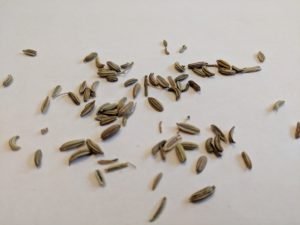








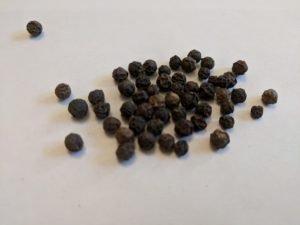



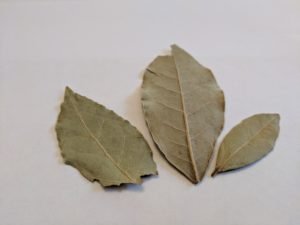


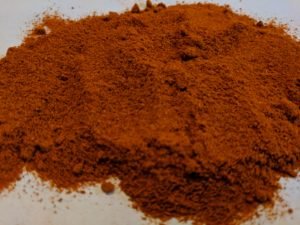











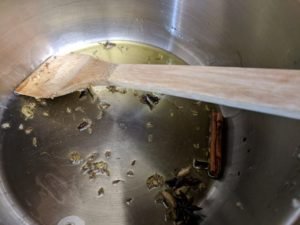





You must be logged in to post a comment.